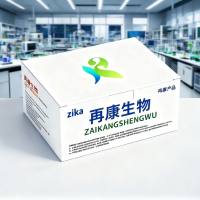Fluorescent In Situ Hybridization to Detect Transgene Integration into Plant Genomes
互联网
421
Fluorescent chromosome analysis technologies have advanced our understanding of genome organization during the last 30 years and have enabled the investigation of DNA organization and structure as well as the evolution of chromosomes. Fluorescent chromosome staining allows even small chromosomes to be visualized, characterized by their composition and morphology, and counted. Aneuploidies and polyploidies can be established for species, breeding lines, and individuals, including changes occurring during hybridization or tissue culture and transformation protocols. Fluorescent in situ hybridization correlates molecular information of a DNA sequence with its physical location on chromosomes and genomes. It thus allows determination of the physical position of sequences and often is the only means to determine the abundance and distribution of DNA sequences that are difficult to map with any other molecular method or would require segregation analysis, in particular multicopy or repetitive DNA. Equally, it is often the best way to establish the incorporation of transgenes, their numbers, and physical organization along chromosomes. This chapter presents protocols for probe and chromosome preparation, fluorescent in situ hybridization, chromosome staining, and the analysis of results.









